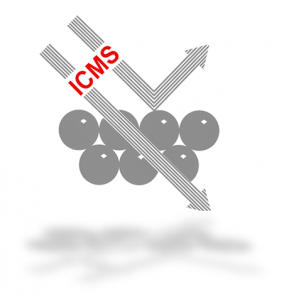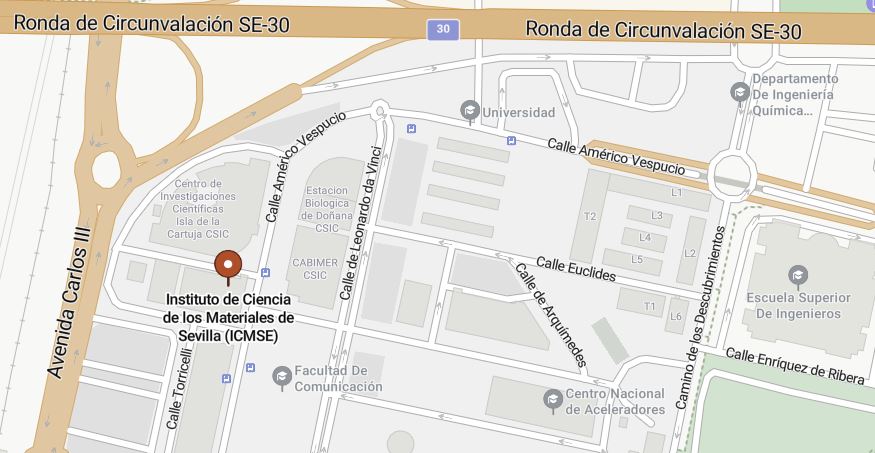INSTITUTO DE CIENCIA DE MATERIALES DE SEVILLA
(Consejo Superior de Investigaciones Científicas – Universidad de Sevilla)
icms-conferences
2025
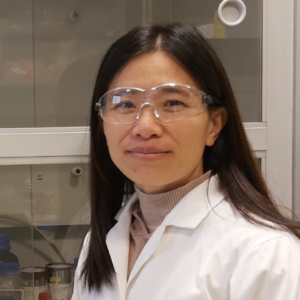
Abstract
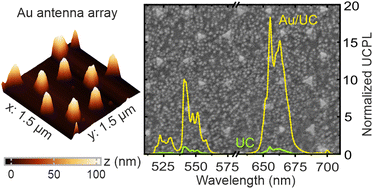 Lanthanide-doped upconversion nanoparticles (UCNPs), as multifunctional light sources, are finding utility in diverse applications ranging from biotechnology to light harvesting. However, the main challenge in realizing their full potential lies in achieving bright and efficient photon upconversion (UC). In this study, we present a novel approach to fabricate an array of gold nanoantennas arranged in a hexagonal lattice using a simple and inexpensive colloidal lithography technique, and demonstrate a significant enhancement of UC photoluminescence (UCPL) by up to 35-fold through plasmon-enhanced photoexcitation and emission. To elucidate the underlying physical mechanisms responsible for the observed UCPL enhancement, we provide a comprehensive theoretical and experimental characterization, including a detailed photophysical description and numerical simulations of the spatial electric field distribution. Our results shed light on the fundamental principles governing the enhanced UCNPs and pave the way for their potential applications in photonic devices.
Lanthanide-doped upconversion nanoparticles (UCNPs), as multifunctional light sources, are finding utility in diverse applications ranging from biotechnology to light harvesting. However, the main challenge in realizing their full potential lies in achieving bright and efficient photon upconversion (UC). In this study, we present a novel approach to fabricate an array of gold nanoantennas arranged in a hexagonal lattice using a simple and inexpensive colloidal lithography technique, and demonstrate a significant enhancement of UC photoluminescence (UCPL) by up to 35-fold through plasmon-enhanced photoexcitation and emission. To elucidate the underlying physical mechanisms responsible for the observed UCPL enhancement, we provide a comprehensive theoretical and experimental characterization, including a detailed photophysical description and numerical simulations of the spatial electric field distribution. Our results shed light on the fundamental principles governing the enhanced UCNPs and pave the way for their potential applications in photonic devices.
13 Marzo 2025 · ICMS Invited Lectures
Bacterial Nanocellulose: From a Multifunctional Scaffold to a Dietary Fiber
Dra. Anna Laromaine
Instituto de Ciencia de Materiales de Barcelona (CSIC)
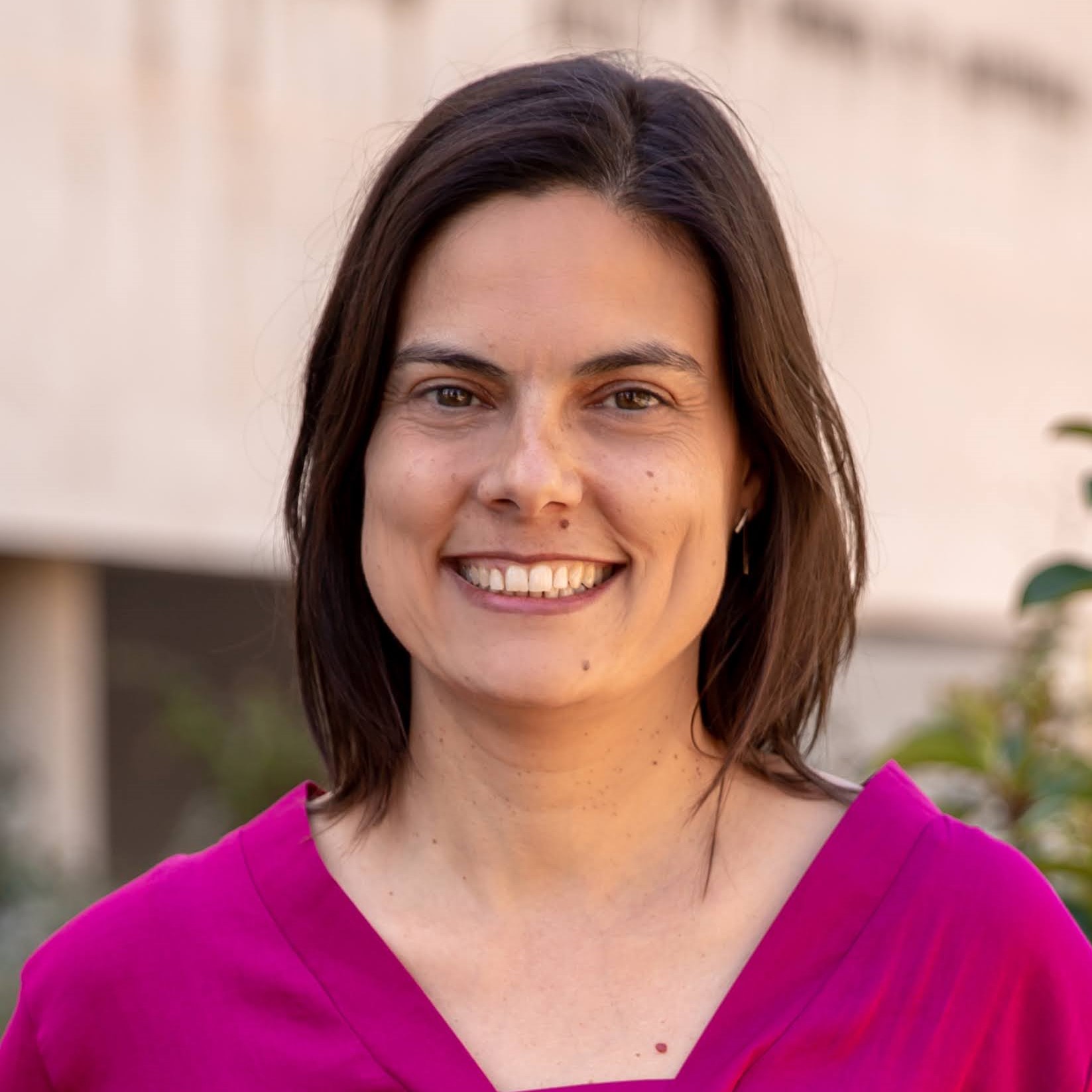
Abstract
Bacterial nanocellulose (BC) is an exopolysaccharide synthesized mainly by gram-negative bacteria. While chemically similar to plant cellulose, BC has unique properties, including a nanostructure, exceptional water retention, and high crystallinity. These qualities have enabled its use in medicine, food, energy storage, and tissue engineering. This presentation highlights two specific applications of BC explored recently for our group:
Bio-Based Composites
BC-based composites with tailored mechanical and functional properties show promise as sustainable alternatives to traditional materials like synthetic polymers and metals. The incorporation of nanoparticles allows for the modification of their chemical and structural properties, enhancing functionality
Dietary Applications and Health Benefits
The dietary potential of BC remains underexplored. Using the C. elegans model, this study investigated BC’s effects on gut motility, lipid metabolism, and microbiota modulation.
1 Abril 2025 · ICMS Invited Lectures
Multiscale materials design for sustainable energy conversion and storage
Prof. Qiong Cai
University of Surrey, UK
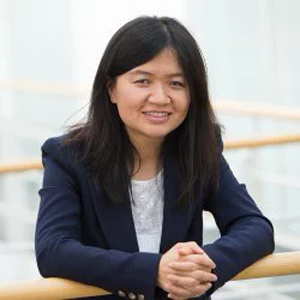
Abstract
Materials are at the heart of enabling technologies for achieving net-zero energy conversion and storage. Our group have been developing a multiscale materials design approach by combining multiscale materials modelling with experimental research for advancing sustainable energy technologies including fuel cells, batteries, hydrogen storage and utilization. In this talk I will show case our work in (1) anode materials design and understanding the anode-electrolyte interface for alkali metal (Li/Na/K)-ion batteries and solid-state batteries, (2) development of novel electrolyte solutions to enable durable aqueous Zn-ion batteries, and (3) catalyst design for converting ammonia to hydrogen and development of catalysts for converting NOx to nitrogen. If time allows, I will also introduce our efforts in modelling 3D electrode microstructure for electrochemical energy technologies using an in-house 3D pore-scale lattice Boltzmann model, and how we can design electrode structures for better performance.
8 Abril 2025 · ICMS-sci-talks
Green and easy synthesis of P-doped carbon-based hydrogen evolution reaction electrocatalysis
Dr. Sergio García Dalí
Surface Chemistry and Catalysis
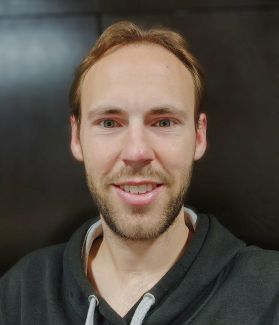
Abstract
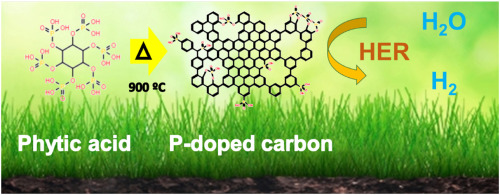 In this study, efficient electrodes for the hydrogen evolution reaction (HER) based on low-cost and metal-free carbon catalysts are presented. Phytic acid, a biosourced molecule containing carbon (C) and phosphorus (P), was found to be an excellent precursor for producing carbon materials with high P content, depending on the carbonization temperature, from 27.9 wt% at 700 °C to 7.3 wt% at 1000 °C. A green and easy route to produce P-doped carbon materials by heat treatment of this biosourced precursor without the need for additional reagents is thus proposed. We show that the conversion of P-O-type groups into P-C-type species is of paramount importance for improving the catalytic activity in HER of P-doped carbon materials. P-C-type groups appear to be the key factor in the electrocatalytic activity, reaching an onset potential of – 0.27 V. This study sheds light on the origin of the catalytic activity of P-doped carbons, in which P is expected to modify the homogenous distribution of the electron density of undoped carbons and increase their catalytic performance.
In this study, efficient electrodes for the hydrogen evolution reaction (HER) based on low-cost and metal-free carbon catalysts are presented. Phytic acid, a biosourced molecule containing carbon (C) and phosphorus (P), was found to be an excellent precursor for producing carbon materials with high P content, depending on the carbonization temperature, from 27.9 wt% at 700 °C to 7.3 wt% at 1000 °C. A green and easy route to produce P-doped carbon materials by heat treatment of this biosourced precursor without the need for additional reagents is thus proposed. We show that the conversion of P-O-type groups into P-C-type species is of paramount importance for improving the catalytic activity in HER of P-doped carbon materials. P-C-type groups appear to be the key factor in the electrocatalytic activity, reaching an onset potential of – 0.27 V. This study sheds light on the origin of the catalytic activity of P-doped carbons, in which P is expected to modify the homogenous distribution of the electron density of undoped carbons and increase their catalytic performance.
Dr. Jorge Gil Rostra
Nanotechnology on Surfaces and Plasma
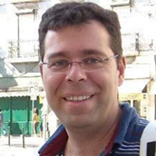
Abstract
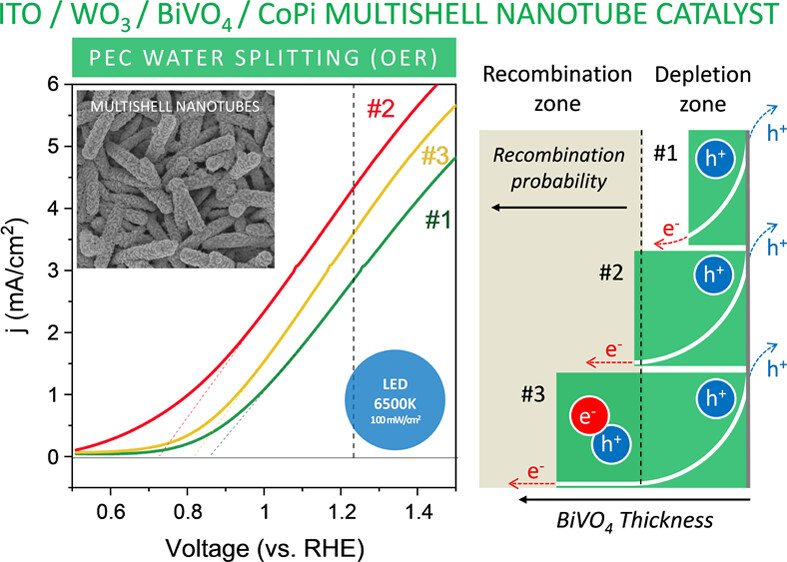 A common approach for the photoelectrochemical (PEC) splitting of water relies on the application of WO3 porous electrodes sensitized with BiVO4 acting as a visible photoanode semiconductor. In this work, we propose a new architecture of photoelectrodes consisting of supported multishell nanotubes (NTs) fabricated by a soft-template approach. These NTs are formed by a concentric layered structure of indium tin oxide (ITO), WO3, and BiVO4, together with a final thin layer of cobalt phosphate (CoPi) co-catalyst. The photoelectrode manufacturing procedure is easily implementable at a large scale and successively combines the thermal evaporation of single crystalline organic nanowires (ONWs), the magnetron sputtering deposition of ITO and WO3, and the solution dripping and electrochemical deposition of, respectively, BiVO4 and CoPi, plus the annealing in air under mild conditions. The obtained NT electrodes depict a large electrochemically active surface and outperform the efficiency of equivalent planar-layered electrodes by more than one order of magnitude. A thorough electrochemical analysis of the electrodes illuminated with blue and solar lights demonstrates that the characteristics of the WO3/BiVO4 Schottky barrier heterojunction control the NT electrode efficiency, which depended on the BiVO4 outer layer thickness and the incorporation of the CoPi electrocatalyst. These results support the high potential of the proposed soft-template methodology for the large-area fabrication of highly efficient multishell ITO/WO3/BiVO4/CoPi NT electrodes for the PEC splitting of water.
A common approach for the photoelectrochemical (PEC) splitting of water relies on the application of WO3 porous electrodes sensitized with BiVO4 acting as a visible photoanode semiconductor. In this work, we propose a new architecture of photoelectrodes consisting of supported multishell nanotubes (NTs) fabricated by a soft-template approach. These NTs are formed by a concentric layered structure of indium tin oxide (ITO), WO3, and BiVO4, together with a final thin layer of cobalt phosphate (CoPi) co-catalyst. The photoelectrode manufacturing procedure is easily implementable at a large scale and successively combines the thermal evaporation of single crystalline organic nanowires (ONWs), the magnetron sputtering deposition of ITO and WO3, and the solution dripping and electrochemical deposition of, respectively, BiVO4 and CoPi, plus the annealing in air under mild conditions. The obtained NT electrodes depict a large electrochemically active surface and outperform the efficiency of equivalent planar-layered electrodes by more than one order of magnitude. A thorough electrochemical analysis of the electrodes illuminated with blue and solar lights demonstrates that the characteristics of the WO3/BiVO4 Schottky barrier heterojunction control the NT electrode efficiency, which depended on the BiVO4 outer layer thickness and the incorporation of the CoPi electrocatalyst. These results support the high potential of the proposed soft-template methodology for the large-area fabrication of highly efficient multishell ITO/WO3/BiVO4/CoPi NT electrodes for the PEC splitting of water.
3 Junio 2025 · ICMS-sci-talks
Quantum Thermometry with Single Molecules in Nanoprobes
Dra. Victoria Esteso Carrizo
Semiconductor Materials for Sustainability
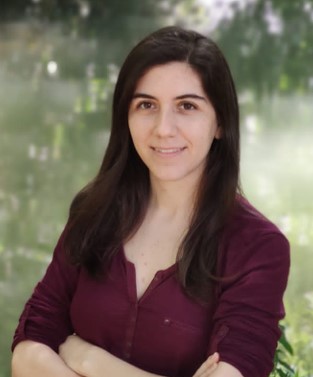
Abstract
An understanding of heat transport is relevant to developing efficient strategies for thermal management in areas of study such as microelectronics, as well as for fundamental science purposes. However, the measurement of temperatures in nanostructured environments and in cryogenic conditions remains a challenging task, requiring both high sensitivity and noninvasive approaches. Here, we present a portable nanothermometer based on a molecular two-level quantum system that operates in the (3–20)-K temperature range, with temperatures and spatial resolutions on the order of millikelvins and micrometers, respectively. We validate the performance of this molecular thermometer by estimating the thermal conductivity of a nanopatterned silicon membrane, where we find a quadratic temperature dependence. In addition, we demonstrate two-dimensional temperature mapping via the simultaneous spectroscopy of multiple probes deposited onto such a suspended membrane. Overall, these results demonstrate the unique potential of the proposed molecular thermometer to explore thermal properties with submicron accuracy and unveil related phenomena manifested at cryogenic temperatures.
1 Julio 2025 · ICMS-sci-talks
To be determined
Dra. Rosa Pereñíguez Rodríguez
Materials and Processes for Energy and Environment
Abstract
7 Octubre 2025 · ICMS-sci-talks
Nucleation and growth of plasma sputtered silver nanoparticles under acoustic wave activation
Dr. Manuel Oliva Ramírez
Nanotechnology on Surfaces and Plasma
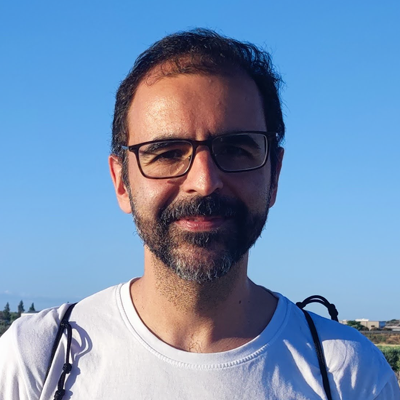
Abstract
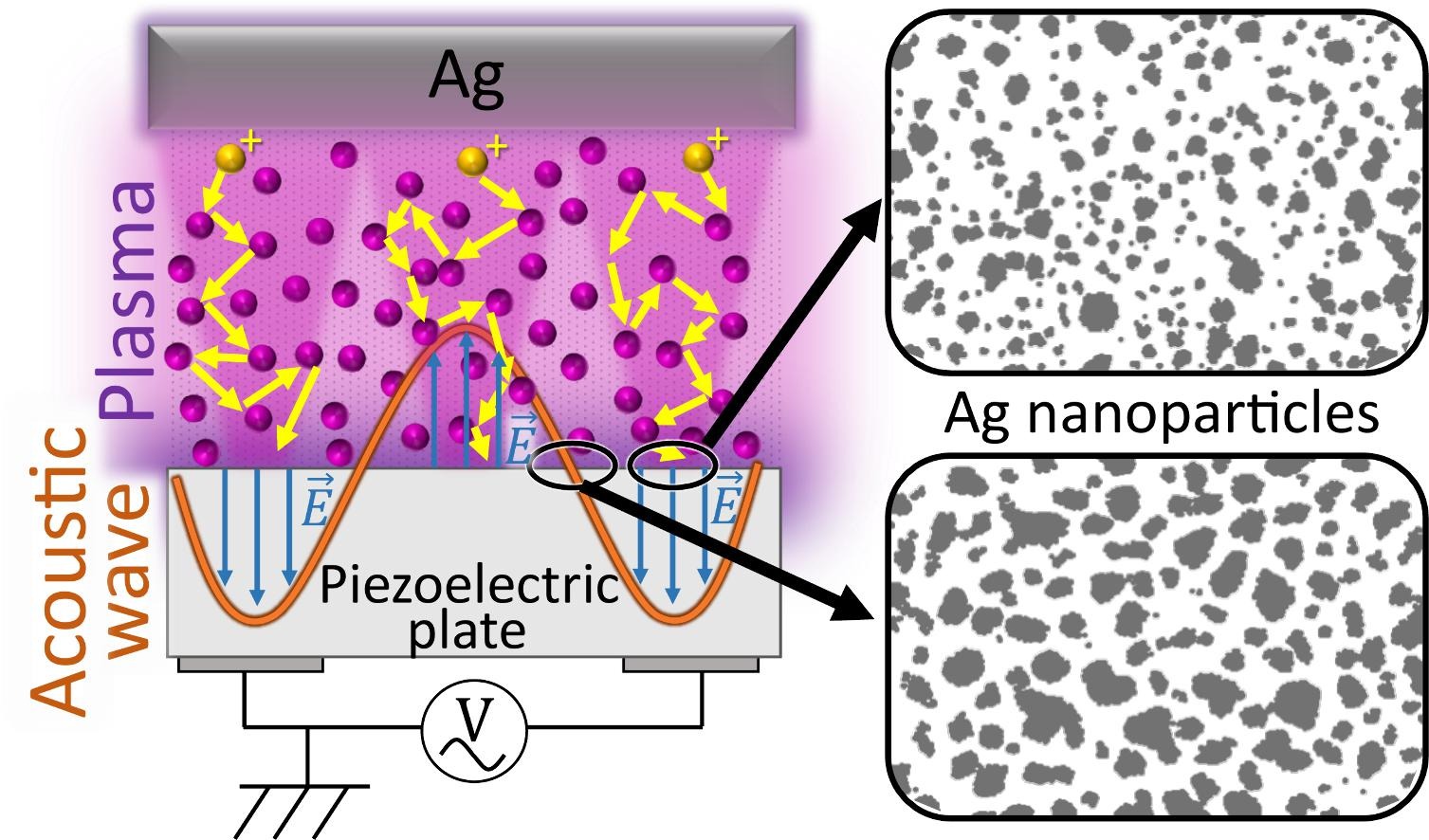 Early results on the plasma deposition of dielectric thin films on acoustic wave (AW) activated substrates revealed a densification pattern arisen from the focusing of plasma ions and their impact on specific areas of the piezoelectric substrate. Herein, we extend this methodology to tailor the plasma deposition of metals onto AW-activated LiNbO3 piezoelectric substrates. Our investigation reveals the tracking of the initial stages of nanoparticle (NP) formation and growth during the submonolayer deposition of silver. We elucidate the specific role of AW activation in reducing particle size, enhancing particle circularity, and retarding NP agglomeration and account for the physical phenomena making these processes differ from those occurring on non-activated substrates. We provide a comparative analysis of the results obtained under two representative plasma conditions: diode DC sputtering and magnetron sputtering. In the latter case, the AW activation gives rise to a 2D pattern of domains with different amounts of silver and a distinct size and circularity for the silver NPs. This difference was attributed to the specific characteristics of the plasma sheath formed onto the substrate in each case. The possibilities of tuning the plasmon resonance absorption of silver NPs by AW activation of the sputtering deposition process are discussed.
Early results on the plasma deposition of dielectric thin films on acoustic wave (AW) activated substrates revealed a densification pattern arisen from the focusing of plasma ions and their impact on specific areas of the piezoelectric substrate. Herein, we extend this methodology to tailor the plasma deposition of metals onto AW-activated LiNbO3 piezoelectric substrates. Our investigation reveals the tracking of the initial stages of nanoparticle (NP) formation and growth during the submonolayer deposition of silver. We elucidate the specific role of AW activation in reducing particle size, enhancing particle circularity, and retarding NP agglomeration and account for the physical phenomena making these processes differ from those occurring on non-activated substrates. We provide a comparative analysis of the results obtained under two representative plasma conditions: diode DC sputtering and magnetron sputtering. In the latter case, the AW activation gives rise to a 2D pattern of domains with different amounts of silver and a distinct size and circularity for the silver NPs. This difference was attributed to the specific characteristics of the plasma sheath formed onto the substrate in each case. The possibilities of tuning the plasmon resonance absorption of silver NPs by AW activation of the sputtering deposition process are discussed.
4 Diciembre 2025 · ICMS-sci-talks
To be determined
Dra. Esperanza Pavón González
Materials for the Energy and Environment
Abstract
Instituto de Ciencia de Materiales de Sevilla (ICMS)
Centro de Investigaciones Científicas Isla de la Cartuja. C/Américo Vespucio, 49 – 41092 Sevilla (España)
Tel.: (+34) 954489527 | Fax: (+34) 954460165 |
